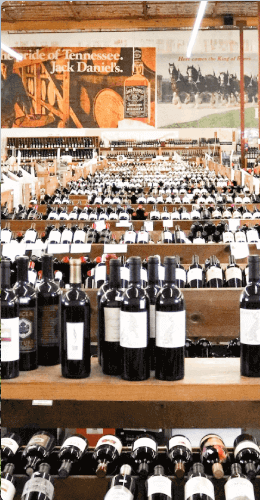Tips to keep low-alcohol or no-alcohol wine fresh!

Although some fine wine purists may turn up their nose at drinking dealcoholized wines, they form an attractive choice for many others who, occasionally or always want to avoid the effects of consuming alcohol, which in wines can routinely vary from 12% to 16% by volume. Of course, some wines come naturally with low alcohol, as my recent review here at your favorite wine store California found—that’s just how they’re made. Bottle Barn also stock a variety of no-alcohol wines, which is wine in which the alcohol has been extracted by a few different possible technical methods.
These include vacuum distillation, which evaporates alcohol and other volatile compounds in wine at low temperatures. The aroma compounds are added back to the wine. A second method, spinning cone distillation columns repeatedly evaporates and condensates at low temperatures to separate out the wine’s components, discarding the alcohol. Then there’s reverse osmosis: filtration that also separates wine components, but now based on their molecular size, including the alcohol, which is not replaced once taken out.
Alcohol, however, is a natural preservative, so removing or reducing the alcohol level in low alcohol red wine or low alcohol white wine potentially has consequences for keeping that wine fresh after opening. Whether or not a wine producer chooses other methods to prevent the wine from turning is an individual choice. It should go without saying that winery sanitation is key to producing low alcohol wine. This is by definition an industrial wine process, so you won’t find any natural wine that is very low (say, less than 5% ABV) or no-alcohol.
One New Zealand winemaking group notes that “One of the biggest concerns is the increased risk of secondary fermentation or spoilage in-bottle, due to the lower alcohol levels.” They conclude: “We need not be overly concerned about this as long as the winemaking protocols recognize the specific risk that low-alcohol wines can present.”
The response to low- or no-alcohol in the wine bottle can be carefully-adjusted quantities of sulfites or other preservatives. The results of normally-occurring fermentation of grape must is a wine that, given a clean production and bottling environment, is pretty stable. Taking the alcohol out disrupts this equilibrium. Our New Zealand source explains that the inherent properties of wine--low pH/high acidity, high alcohol, and free SO2 (sulfites)--aid in preventing secondary spoilage once the wine is bottled. With lower alcohol, reliance on molecular SO2 becomes critical. This requires that wines are bottled with the pH and free SO2 relationship—the two influence one another--to deliver a molecular SO2 level in the wine of 0.8ppm. “In the case of wines that are low alcohol and/or high sugar, then a molecular SO2 of 1.2ppm is safer.” This level is lethal to all micro-organisms (bacteria, yeasts, and molds).
All of that said, the no- and low-alcohol wine found at wine store California, Bottle Barn, has been produced to exacting safety standards. Still, after opening, the absence of alcohol, and the possible presence of residual sugars can favor spoilage.
How to keep such wine fresh?
A lot of these recommendations apply to all wines as well. Changes to flavor and aroma compounds, refermentation, and, as the name implies, oxidation occur in the increased air presence inside an open bottle. Also, chemical reactions usually occur at a faster rate the higher the ambient temperature of the wine. Sometimes, especially for red wine, we want these factors acting on the wine; think, decanting before service. For wine storage, however, these actions can help increase longevity without serious affecting flavors and aromas:
- Get rid of the oxygen in the open bottle using a vacu-vin type system or a Coravin-type system. The first suck the air out of the bottle; the second replaces the air with a harmless inert gas. The vacuum option can add a few to several days to a wine’s life, whereas the gas option can stabilize the wine for months or even longer. Of course, this latter choice can be more costly in terms of required equipment.
- Refrigerate the wine, which slows down active chemical processes. This is even true for low alcohol red wine, although you will likely want to warm the wine up to around 68 degrees Fahrenheit before serving.
- If you don’t have such equipment on hand, ensure that the wine bottle is well stoppered. With a screw cap, make sure it’s tightly closed. For cork closure, tightly replace the cork. If possible, use the same end of the cork originally in the bottle—that is, don’t flip it over.
- Opened bottle of wine should be stored upright, which again reduces contact with the air in the bottle.
- Another way to reduce air contact is to pour the wine into another, smaller container, like a mason jar, though I must say I’ve never done this.
- It’s always wise to keep all wine—open or not, low-alcohol or not—away from heat sources and light, especially direct sunlight.
I hope you enjoyed about low alcohol wine and how to keep it fresh after opening. Be sure to explore Bottle Barn’s other wine information pages and drop us a comment below!
By Charlie Leary


















Leave a comment